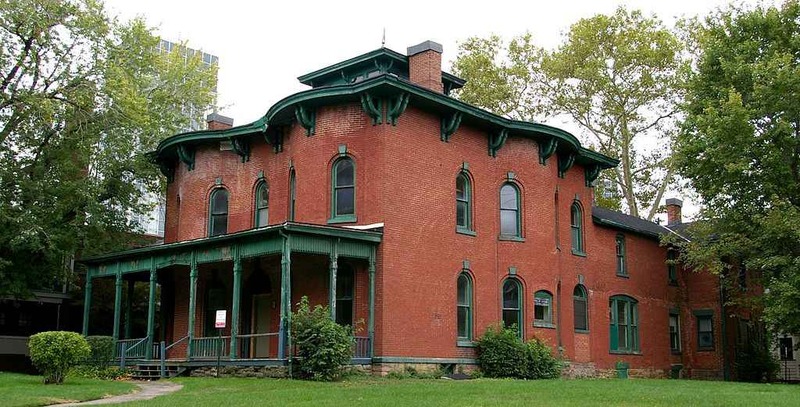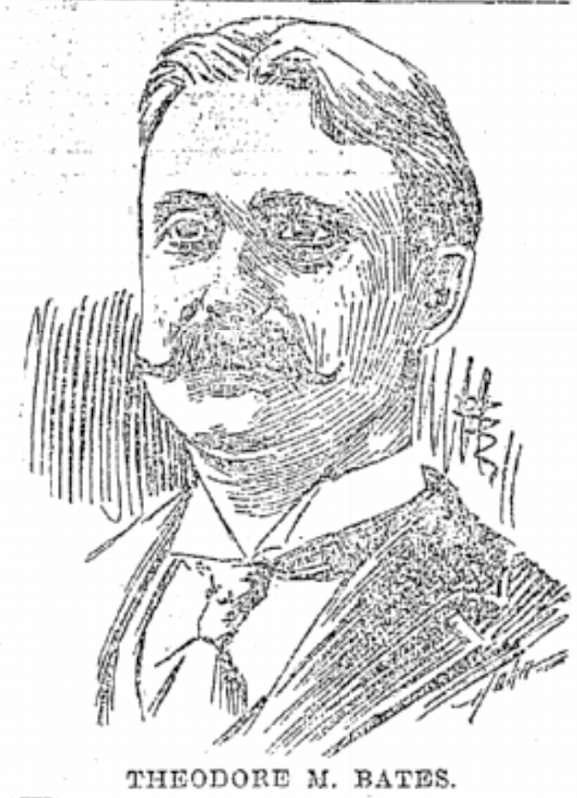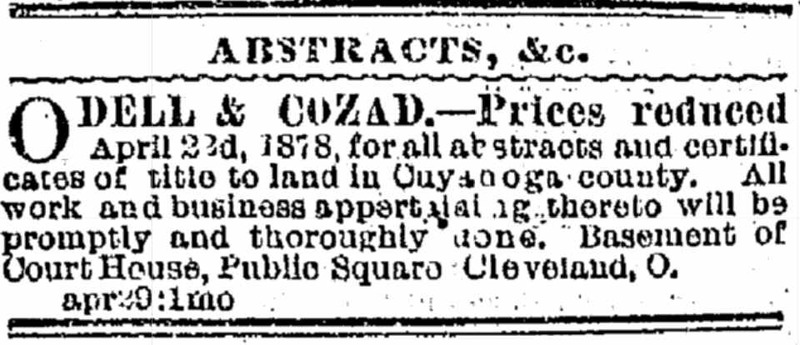
Arriving in 1807, Cleveland pioneer Andrew Cozad settled in the area east of the city that is known today as University Circle, later establishing what proved to be a successful commercial brick-making business. He and his wife Sally had five children with one of their four sons, Justus, being born to them in 1833. As a young boy Justus was, by his own later admission, a difficult child but quickly realized his life's ambition of becoming a civil engineer and soon committed fully to educating himself. Before long he was employed in a railroading career earning a substantial salary for that time of $60 a month. Justus passed the majority of these earnings on to his father, who invested them into the construction of a house for Justus which he personally completed in 1852.
This house is reputed to have been involved with the Underground Railroad, and if this is in fact the case Justus Cozad could not have been a "conductor," having moved to Nebraska the year after its completion to pursue work in land surveying and not returning permanently to Cleveland until 1862. During those years Justus's brother-in-law's father Andrew Duty resided in the home and while there is no definitive evidence linking him to the aiding of fugitive slaves, certain clues suggest that he likely did. Duty contributed generously to and served as trustee of the Euclid Avenue Congregational Church throughout his life. Congregational churches were known to be largely abolitionist, and a number of Euclid Avenue's members had documented Underground Railroad involvement. Among them were immediate neighbors, the Fords, who owned land all along Euclid Avenue between Doan's Corners and Dugway Brook. Thus, while it may be impossible to confirm that Andrew Duty operated Justus Cozad's house as an Underground Railroad stop, at the very least it can be said that a strong connection exists between the house and the time, place, and people involved in those activities.
When Justus finally returned to Cleveland it was only a year before he moved again, this time to Indianapolis for work. He returned in 1871, completing the Italianate addition to the front of the house the following year. He also entered into the title abstract business but was eventually forced to sell many of his business interests along with his home after his brother Marcus defaulted on a substantial loan that he had extended to him. The house was soon purchased by Justus's daughter Olive and her husband Theodore Bates, however, and Justus moved into a home across East 115th Street from them. It was here that he lived until his death in 1910, and nine years later both Olive and Theodore also passed away.
After the passing of Olive and Theodore the house was divided into apartments and managed by Bates & Springer Inc., catering to the thriving academic and medical communities of the area for the next sixty-five years. Gaining historic landmark status in 1974, the residence continued to operate as a rooming house until it was purchased by University Hospitals in 1985. After its acquisition by UH, the house sat vacant and neglected for the better part of twenty years before University Hospitals decided to donate the property to University Circle Inc. (UCI) in 2006. Thereafter, the organization Restore Cleveland Hope worked with UCI to transform the Cozad-Bates House into a teaching center that celebrates Cleveland's Underground Railroad history.
Today the house seems rather out of place amongst the towering medical buildings, large parking structures, and high-rise apartment buildings that surround it. However, if you look at the historical circumstances that surround the house it becomes clear why it is located and still standing in the heart of Cleveland's cultural center.
Audio
Images





